This is the second part of a two part article. This little post was inspired by a little article titled “Doctor’s Orders; Let children just play” posted in the hot dog-days of summer, August 2018.
Their 10- and 6-year old were picked up by police and detained for five hours in 2015 for walking home “unsupervised” from a local park. The folks at Child Protective Services threatened to take the children away from Danielle and Alexander Meitiv. With court battles ensuing and ample media attention, the head of Maryland’s Social Services Administration finally released a memo to staff acknowledging in creepy bureaucratic fashion that, “Children playing outside or walking unsupervised does not meet the criteria for a CPS response absent specific information supporting the conclusion that the child has been harmed or is at substantial risk of harm if they continue to be unsupervised.” -Townhall
The article reinforces a notion that I have that “play is the work of children”. It is how they learn to become an adult. It doesn’t matter if you are a dog, a cat, an elephant, or a monkey, all animals learn from playing. Here, I would like to continue my discussion of things that a parent should permit their children to do…
Squash a Penny on a Railroad Track
“In many ways life was so much more predictable back then; in other ways it was much less so. Organized sports were almost non-existent in my childhood. Summer was free time on steroids, with hours, days, weeks (it seemed like forever back then!) to do nothing. I don’t recall being bored; but we played as a matter of course outside the aperture of our parent’s eye. Off to the playground on our bike; downtown to get a soda or fudgesicle; or, in the case of some of the older kids, hanging around waiting for the afternoon papers to come in before heading out on their paper route. But this day, we were in the business of sabotage. Today, we were going to do something really big … and dangerous. This could change everything…. We glanced around to make sure no one was watching. The caper was on. The penny was placed well down the tracks from our hiding place. We were tucked in under a pile of brush and ducked low so as not to be seen from the train. Then, we heard it. There was a crossing about half a mile away, and the whistle blew. There was no rushing the tracks now, no undoing what we had done. The big locomotive could be heard rumbling toward us. Think of it – a time when placing a penny on the railroad tracks was paramount to sedition! I would graduate to more serious pranks as I got older, but by today’s standards the bar was extremely low for our misbehaving antics… … I remember being very nervous, praying that train would stay upright and on course. As the engine lumbered by us I recall the feeling of relief. And as the caboose faded safely into the distance, having waited to make certain no engineer could spot us, we ran to the location. There it was: the flattened penny; pancake currency and the feeling of exhilaration believing that we had taken a tremendous risk and come out of it unscathed.” -Believeinplace Blog
In my days of yore, pennies were made of copper. So when you would put a penny on the tracks it would flatten out into a flat copper plate. Not, so today. American pennies are made out of a zinc alloy. (The modern penny is made of 97.5 percent zinc and 2.5 percent copper. This is known as copper plated zinc.) Ah, it’s not the same. I would suggest using a nickel or better yet, a dime instead.
Nickels have more copper in them than pennies do. So it is better to flatten. Pennies only have about 2.5% copper in it, but nickels are 75% copper. The U.S. first struck 5¢ nickel coins in 1866. All nickels from that date to the present except for the famous “war nickels” (mid-1942 to 1945) are made of the same metal, an alloy of 75% copper and 25% nickel. “War nickels” were made of 35% silver, 56% copper, and 9% manganese because nickel was needed for the war effort.
Dimes are better than nickels. So, if the reader were to use a dime, as it is almost 92% copper, it is more like that of the copper pennies of our youth. As of 2014, the dime is made out of a blend of metals called “clad.” A copper center is sandwiched between two layers of a 75-percent copper and 25-percent nickel blend. The total composition of a modern dime is 91.67 percent copper and 8.33 percent nickel.
| American Coin | Percentage of Copper |
| Penny | 2.5% |
| Nickel | 75% |
| Dime | 92% |
You do want to stay aware as you put your penny on a railroad track to be sure a train isn’t coming. If you’re going to wait for the train to come by and smoosh your coin, you also want to stand back at least 30 feet, as it could hypothetically come flying off and hit you. You don’t have to wait around for the train, though. If you decide to come back in a few hours or the next day to see what became of your penny, mark the spot with a stick before you leave for easy finding later on. -The Risky Kid

The types of train tracks that one would try this kind of feat are freight lines, and freight lines ONLY.
High speed rail is far to dangerous to attempt. The same is true for subway lines and similar rail. Anything that involves the transport of humans is to be avoided. Don’t even consider it. It is DANGEROUS.
Always stick to rail that services freight, and you will be fine. Back in my school days, the freight lines carried coal, and a handful of box cars in and about the Allegheny hills.
And, while you are at it, hanging around railroad tracks, might I suggest the following activities…
- Walk on top of the tracks and see how long you can go before falling off. (Not everyone shares my point of view. HERE is an article where it is considered the height of danger and folly to walk on train tracks. HERE is an article that says that it is terribly DANGEROUS and maybe evil to even suggest children participate in such a thing.)
- Searching for loose railroad spikes. These are the “nails” that hold the tracks to the wood ties. (A rail spike (also known as a cut spike or crampon) is a large nail with an offset head that is used to secure rails and base plates to railroad ties (sleepers) in the track.)
Robert Livingston Stevens is credited with the invention of the rail spike, the first recorded use of which was in 1832. The railroad spike was an invention which resulted from the state of industrialisation in the United States in the early 19th century: English mainline railways of that period used heavy and expensive cast iron chairs to secure T-shaped rails; instead, Stevens added a supporting base to the T rail which could be fixed with a simple spike. In 1982, the spike was still the most common rail fastening in North America. Common sizes are from 9⁄16 to 10⁄16 inch (14 to 16 mm) square and 5 1⁄2 to 6 inches (140 to 150 mm) long.
- Collecting those little marble sized metal ores that abound on and between the tracks. I never found out what they were and why they existed as a boy, but I used to pick up a couple and toss them into the trees as I’d walk. Later on, after the invention of the internet, I was able to figure out what these things were…
These little dirty black marble sized balls are Taconite pellets. They are iron and are formed into pellets for the trip from the mine to industry. Several materials are formed into pellets or beads in this way. Plastic is another. In a pellet form the iron, plastic, what ever, takes on more of a fluid characteristic which is easier to transport, load and unload, store, and measure.
Sword Fight With Sticks
“I fight in a group called River Run Belegarth, a realm of Belegarth Medieval Combat Society. As per the name, we are a medieval battle game utilizing padded weapons including but not limited to; swords (large and small), shields, arrows, javelins, spears, maces, and flails. The Belegarth community spreads across the country, we even have realms in Canada and Puerto Rico. We follow a simple honor based system. The Belegarth rules are found in the Book of War.” -reddit
Parents are wary of anything involving sharp objects, sticks included. However, letting your kid engage in some improvised swashbuckling is too fun an opportunity to pass up because of a negligible risk of injury. One of the most memorable events is to take them to a medieval recreation or fair. Have them dress up and enjoy (something every little girl yearns to do).
Dress-up is very big in China. Especially traditional Han clothing and outfits.
A Renaissance fair, Renaissance faire, or Renaissance festival is an outdoor weekend gathering, usually held in the United States, open to the public and typically commercial in nature, which purportedly recreates a historical setting for the amusement of its guests. Some are permanent theme parks, while others are short-term events in a fairground, winery, or other large public or private spaces. Renaissance fairs generally include an abundance of costumed entertainers or fair-goers, musical and theatrical acts, art and handicrafts for sale, and festival food. Some offer campgrounds for those who wish to stay more than one day. Many Renaissance fairs are set during the reign of Queen Elizabeth I of England. Some are set earlier, during the reign of Henry VIII, or in other countries, such as France, and some are set outside the era of the Renaissance; these may include earlier Medieval periods (including Vikings), or later periods, such as 17th-18th Century pirates. Some engage in deliberate "time travel" by encouraging participants to wear costumes representing several eras in a broad time period. Renaissance fairs encourage visitors to enter into the spirit of things with costumes and audience participation. Many welcome fantasy elements such as wizards and elves. -Wikipedia
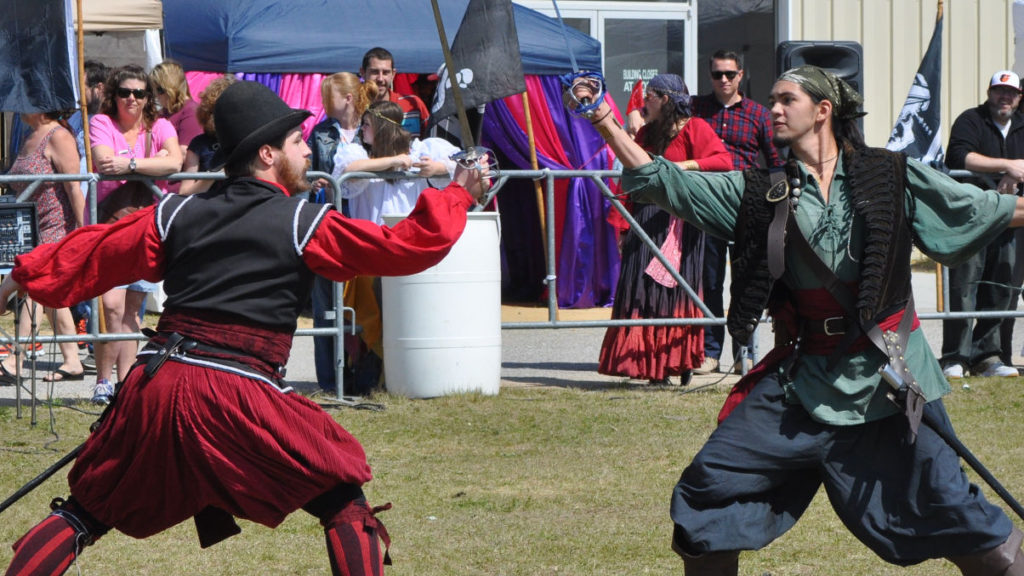
Ah… To dress up and role play. Don’t let the “busy body” down the street prevent your children from role play…
“In Waynesboro, Georgia, “trick or treaters” must be 12 or younger; they must be in a costume; and they must be accompanied by an adult at least 21 years of age. So if you have kids who are 15, 10, and 8, you can’t send them out together. The 15-year-old is not allowed to dress up, yet she won’t be considered old enough to supervise her siblings for another six years. And this is on the one night of the entire year we traditionally let children pretend to be adults. Other schools and community centers now send letters home asking parents not to let their children wear scary costumes. Some even organize “trunk or treats”—cars parked in a circle, trunks open and filled with candy, thus saving the kids from having to walk around the neighborhood or knock on doors. (That would be tiring and terrifying.) If this is childhood, is it any wonder college kids also expect to be micromanaged on Halloween? At Yale in 2015, after 13 college administrators signed a letter outlining appropriate vs. inappropriate costume choices for students, the childhood development expert and campus lecturer Erika Christakis suggested that it would be better to allow kids to think for themselves. After all, Halloween is supposed to be about pushing boundaries. “Is there no room anymore for a child or young person to be a little obnoxious…or, yes, offensive?” she wrote. “Have we lost faith in young people’s capacity—your capacity—to ignore or reject things that trouble you?” Apparently, yes. Angry students mobbed her husband, the professor Nicholas Christakis, surrounding him in the courtyard of the residential college where he served as master. They screamed obscenities and demanded he apologize for believing, along with his wife, that college students are in fact capable of handling offensive costumes on Halloween. “Be quiet!” a student shouted at him at one point. “As master, it is your job to create a place of comfort and home for the students!”” -The Fragile Generation
Stand on the Roof
This little activity is not something that I ever thought was significant. However, it was not until I was older that I began to realize the importance of it. My first experience was when I was (maybe) seven, and my “girlfriend” (at the time, a young cutie named Mary) snuck me into her bedroom, and we crawled out her bedroom window and hung out on her roof. Indeed, what kid hasn’t wanted to get a bird’s eye view of the neighborhood?
Ah, Mary. She taught me many things. She was my teacher for making my first ketchup sandwich, and she taught me how to steal candy from the local store. Heh heh. Don’t worry, the store keeper called our parents and we got a long lecture on how bad we were. Her father used to make rock candy in his basement, and we would go down and eat some sugar from time to time. I suppose if we would have been a little older we would have experienced other “firsts” together… first kiss, first sex, first… However, that never materialized as we moved and I never saw her again.
Ah. Standing on the roof.
“Sandseter began observing and interviewing children on playgrounds in Norway. In 2011, she published her results in a paper called “Children’s Risky Play From an Evolutionary Perspective: The Anti-Phobic Effects of Thrilling Experiences.” Children, she concluded, have a sensory need to taste danger and excitement; this doesn’t mean that what they do has to actually be dangerous, only that they feel they are taking a great risk. That scares them, but then they overcome the fear. In the paper, Sandseter identifies six kinds of risky play: (1) Exploring heights, or getting the “bird’s perspective,” as she calls it—“high enough to evoke the sensation of fear.” (2) Handling dangerous tools—using sharp scissors or knives, or heavy hammers that at first seem unmanageable but that kids learn to master. (3) Being near dangerous elements—playing near vast bodies of water, or near a fire, so kids are aware that there is danger nearby. (4) Rough-and-tumble play—wrestling, play-fighting—so kids learn to negotiate aggression and cooperation. (5) Speed—cycling or skiing at a pace that feels too fast. (6) Exploring on one’s own. This last one Sandseter describes as “the most important for the children.” She told me, “When they are left alone and can take full responsibility for their actions, and the consequences of their decisions, it’s a thrilling experience.”” -The Overprotected Kid
This is ideal if you are at home in the United States. This way, standing on the roof of your home is one of the more risky activities, and yet the most rewarding. In all cases, please supervise this vertical venture and take the necessary precautions: Only allow your child to attempt if your roof isn’t overly steep and is in good condition, without loose shingles and other potential hazards. Have your kid walk straight up and down the roof, standing with one foot on either side of its peak for stability, as they survey the landscape below.
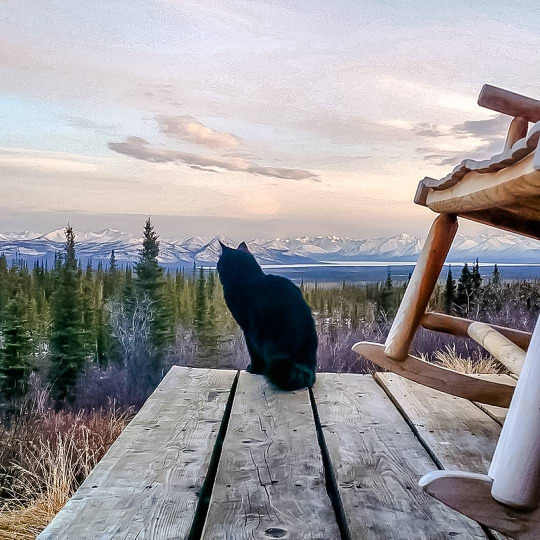
Here in China, access to the top floor of all buildings is easily accessible. All one need do is take an elevator to the 86 floor, and then take the stairs up to the roof. It’s not for the faint of heart, but trust me, your kids would love it.
Shoot a Gun
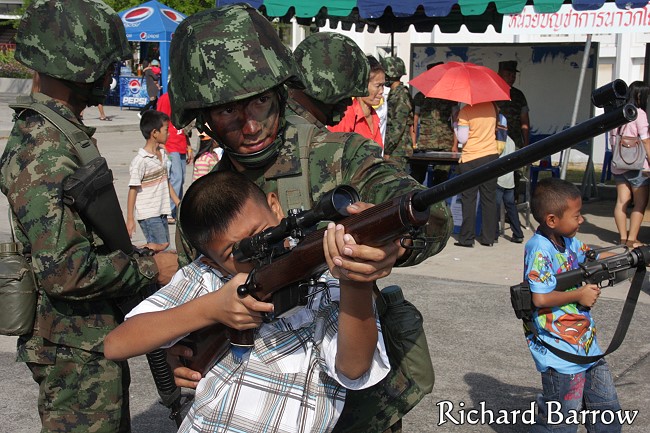
Warning; I advocate that children should be taught to be able to use firearms safely. This is not considered proper in our new American progressive reality. Never the less, it is my strong belief. My Children all are taught here in communist China on how to handle firearms and shoot, and I believe that there is no excuse why American children can't be trusted to do the same.
When I grew up, all my male classmates were out shooting guns when they were seven. My father, of an urban liberal persuasion, wouldn’t let me near a firearm until I was 17. Still, I strongly believe that one of the most important skills a parent can teach their children is self defense. Dogs do it. Cats do it, tigers do it. Only domesticated animals like cows, sheep, chickens, turkeys, and domesticated pigs don’t. (I guess that is why we farm them for food. They don’t fight back.)
Yes. Humans tend NOT to EAT animals that fight back. I wonder why…

If I still lived in the United States, I would make the arrangements to teach my children how to shoot. As it stands, here in China they have to wait until they are in their early teens before they obtain weapon training (everyone in China MUST complete basic military training as part of middle school). The good news is that they will get a very comprehensive training in both small arms, and fully automatic weapons.
Wild hogs are taught to defend themselves and fight. When someone wants to prevent you from learning how to defend yourself, they have a REASON to do so.

Proactively teaching your kids how to safely use firearms is the best way to teach a healthy respect for them. Don’t allow them to learn by Hollywood movies. These are very unhealthy mediums for learning about firearms. (As anyone can attest to the “sideways” pistol shooting style popularized by the negro urban youth, and the “thug” culture. It is not a way to accurately shoot a pistol.)
When they’re 7 or so, introduce them to a pellet gun and begin teaching proper gun safety rules like keeping their finger off the trigger until they’re ready to shoot and treating every weapon as if it were loaded. Set up a a target (tin cans are fun) in your backyard and let them plink away while you watch.
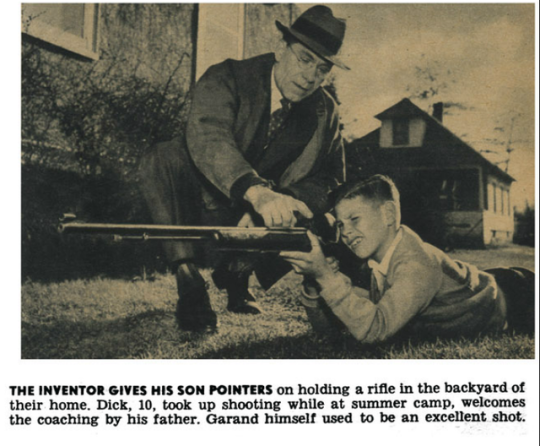
As they get a little older, they can tote around their BB gun by themselves. Don’t worry about them shooting their eye out! Teach your children to be careful, and to follow basic safety precautions at all times. What was good for my generation, my parents’ generation, my grandparent’s generation, and all the generations before them is good for our children today. Do not buy into the political narrative that only the government should own guns. You would think that we would learn from history by now.
In fact, there is an outright war going on that is trying to stupid-down (not dumb-down) American children. This is a planned and staged effort. Here’s an article about just such an effort in Boulder, Colorado. Suddenly, seemingly out of the blue, all kinds of restrictions were being placed on the children there…
“At times, it seems like our culture is conjuring dangers out of thin air, just to have something new to worry about. Thus, the Boulder Public Library in Colorado recently forbade anyone under 12 to enter without an adult, because “children may encounter hazards such as stairs, elevators, doors, furniture, electrical equipment, or other library patrons.” Ah, yes, kids and library furniture. Always a lethal combo. Happily, the library backed off that rule, perhaps thanks to merciless mocking in the media. But saner minds don’t always prevail. At Mesa Elementary School, which also happens to be in Boulder, students got a list of the items they could not bring to the science fair. These included “chemicals,” “plants in soil,” and “organisms (living or dead).” And we wonder why American children score so low on international tests.”
Well… so much for Chemisty, Biology, and Taxidermy.
“But perhaps the single best example of how fantastically fearful we’ve become occurred when the city of Richland, Washington, got rid of all the swings on its school playgrounds. The love of swinging is probably older than humanity itself, given our arboreal origins. But as a school district spokesman explained, “Swings have been determined to be the most unsafe of all the playground equipment on a playground.”
The reader should understand that a government that will restrict a child from the dangers of a swing would absolutely go bonkers over firearm training. Those who have obtained these positions in power want to rule in absolute proclamations. They will to do so and lord their haughty positions over you and your progeny.
“You may think your town has avoided such overkill, but is there a merry-go-round at your local park, or a see-saw? Most likely they, too, have gone the way of lawn darts. The Consumer Product Safety Commission even warns parks of “tripping hazards, like…tree stumps and rocks,” a fact unearthed (so to speak) by Philip Howard, author of 2010’s Life Without Lawyers. The problem is that kids learn by doing. Trip over a tree stump and you learn to look down. There’s an old saying: Prepare your child for the path, not the path for your child. We’re doing the opposite.” -The Fragile Generation
My children all know how to handle firearms. In fact, it was one of the first things we did when we went to Thailand one year. I made it a special point to give them the firearm training by an expert there, and expose them to different types of firearms. Thailand is like the United States and Switzerland, citizens can own and fire firearms there.
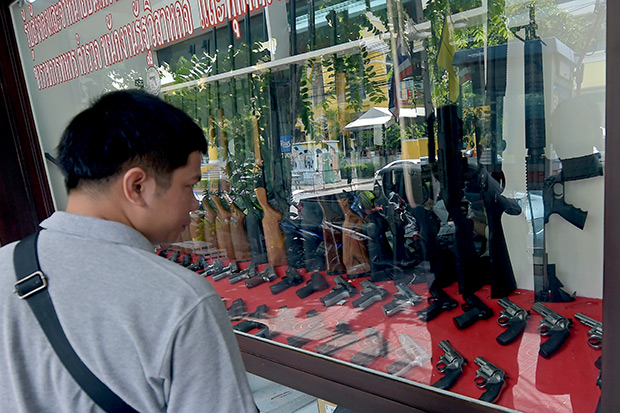
Contrary to the huge onslaught of anti-gun rhetoric from the oligarchy, the Democrats, and their news media, there are those of us that treasure our ability to shoot back if someone tries to hurt us. For my children this is especially true. None of them have shot anyone’s eyes out. Nor have they used it to rob a gas station, or threaten a bully.

When they reach about age 10 or 11, you can introduce them to a .22 caliber rifle or pistol. Again, this should be done under your supervision and you should reinforce good gun safety principles the entire time.
Guns and firearms are dangerous devices. Everyone should know how to operate one, but absolute training and safety is of first importance. For hundreds of years, American children learned how to handle firearms. I myself were taught in my High School gym class as early as ten years old. Of course, today, in this progressive ideal that is what the United States has become, the mere mention of this is considered heresy.
It need not be. It is not heresy. It is history.
In fact, one of my greatest laments is how history is not being taught at all in the United States today. Instead, it is some kind of organized propaganda organ designed to incite diversion and discord. Most people today have no idea that those what fought Great Britain during the Revolutionary War were very young. They birthed a nation when they were in their teenage years.

The Journal of the American Revolution offered this imaginative and fascinating list of the ages of these and other notable figures from the revolutionary era at the moment of America’s founding.
And as one examines the list of nearly 150 of the war’s most revered and reviled, it becomes clear just how young so many of these legendary individuals actually were at the time.
The author of the piece and founding editor of the journal, Todd Andrlik goes so far as to characterize the Founding Fathers much more accurately as the “founding teenagers… or twenty somethings.” And he’s quite right to do so, according to the list.
Consider these:
- Nathan Hale, the legendary Continental spy who lamented on the gallows that he had but one life to give for his country was just 21 in 1776.
- Surprisingly, so was the much hated and feared British cavalry commander “Bloody” Banastre Tarleton.
- Similarly, the supposed sewer of the first Star Spangled Banner, Betsy Ross, was just 24.
- While the leader of the France’s forces in America, Marquis de Lafayette, was a mere 18-year-old in 1776.
Among the ranks of the war’s thirty-somethings include Thomas Jefferson (33), patriot pamphleteer Thomas Paine (39), Britain’s General Cornwallis (38) and King George III (also 38). To check out the full article (and you really should), click HERE. A fine book about just one boy can be found HERE.
This being said, there are some firearms that should wait until your child becomes an adult (or at least 18 years old). For instance, consider this little beauty…

I would think twice before I would have my child shoot off a round from this “bad boy”. No. This type of firearm is best left until they are old enough and mature enough to handle it. I would dare say, that they must at least be old enough to serve in the military. Wouldn’t you think?
Which reminds me, speaking of the military, here’s a bunch of 16 to 18 year olds playing around with a quad version of the above gun…
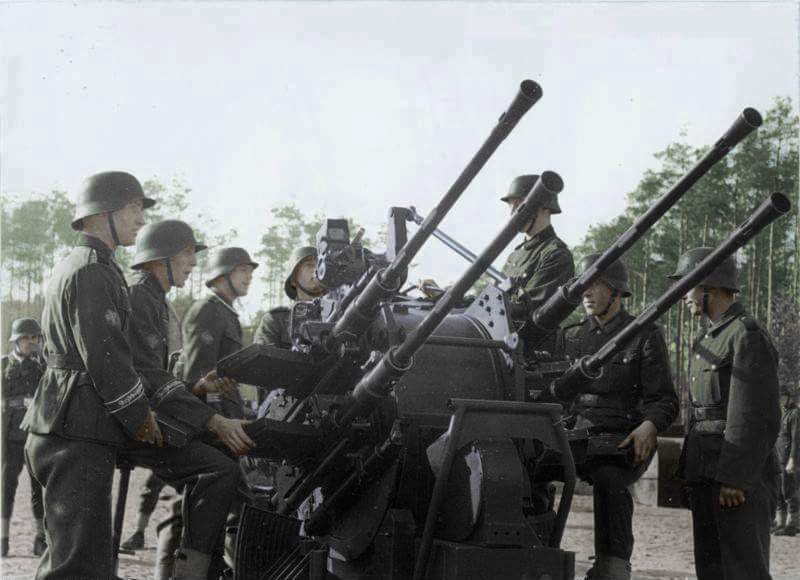
Burn Things With a Magnifying Glass
There are many fun and interesting ways to start a fire without matches, but using a magnifying glass is one of the most versatile. I was first introduced to it when I was maybe six years old, and I inflicted a world of hurt on some poor unsuspecting ants near a parking lot where I lived.
Use of a magnifying glass provides you with a focused beam of heat that cannot only burn paper and leaves, but melt plastic. A kid can even use it to burn a symbol or his name into a piece of wood.
It need not be expensive, all office stationary stores carry them.
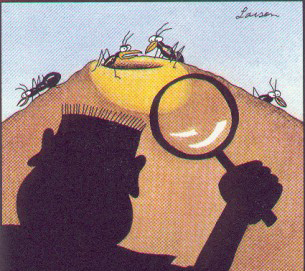
They are especially useful for old farts like me to be better able to read the find print in legal documents, and get the (impossible) code on the back of Apple products.
Roughhouse
“Cross-cultural studies have found that the one thing fathers across the world have in common is that they roughhouse with their kids more than moms. And roughhousing, according to science, makes kids awesome.” -The Importance of Fathers
Roughhousing may just look like a primitive-level melee of potentially injury-causing wrestling and hair pulling, but it actually has a bunch of high-level benefits. Whether children are mixing it up with Dad, or with each other, research has shown that good old fashioned horseplay develops kids’ resilience, intelligence, and even empathy — it teaches them how to negotiate the dynamics of aggression, cooperation, and fair play. So suplex your children more often, and don’t break up the good natured battle royales they put on between themselves.
Climb a Tree
China has the most amazing trees, especially here in the South (China). Yet no one climbs them. You would think that the “forever trees” would make great climbing, but no ones does so. Why is this? Few activities feel more liberating than climbing a tree. It’s thrilling to leave the ground and test your physical deftness, as well as your daring as you decide just how high up you’ll go. Indeed, the air seems fresher among the branches.

“There is rising American interest in European-style “forest kindergartens,” where kids receive little formal instruction and have more freedom to explore in nature. And in Washington, D.C., not far from where I live, we finally have our first exciting playground since the “forgotten playground” was leveled. Located at a private school called Beauvoir, it has a zip line and climbing structures that kids of all ages perceive as treacherous. I recently met someone who worked on the playground and asked him why the school board wasn’t put off by safety concerns, especially since it keeps the park open to the public on weekends. He said the board was concerned about safety but also wanted an exciting playground; the safety guidelines are, after all these years, still just guidelines.” -The Overprotected Kid
When I was a boy I would climb anything. In our back yard we had apple trees (that we would climb just to get the apples), “weeping” willow trees, large and big acorn trees, the magnificent chestnut trees, pine trees (and I did climb them, and ended up terribly sappy) and my all time super favorite tree the Northern Catalpa (Catalpa speciose). (Also known as the Indian Bean Tree. My father told me that local Indians used to take the pea pods on this tree and smoke them.)
The Northern Catalpa is a tree that demands your attention. White, showy flowers. Giant heart-shaped leaves. Dangling bean-like seed pods. Twisting trunk and branches. How could you not stop to take it in? And with all of these unique features, the northern catalpa is popular with kids as well.
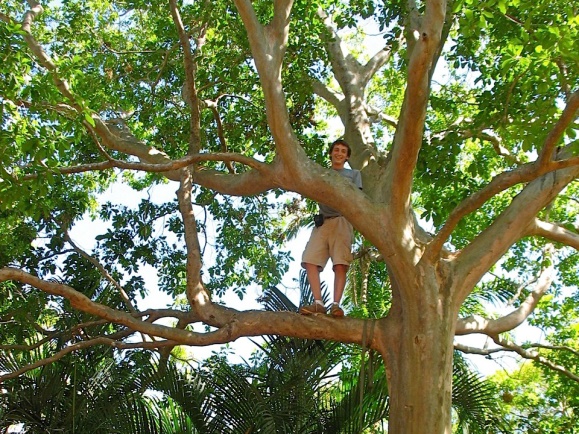
The banyan tree has to be the most kid-friendly tree in the world. Here, the tree lets town hundreds of tentacles that once they take root, form new trees. An old ban yan tree might consist of hundreds of tree trunks and a network canopy that would put the Swiss Family Robenson tree-house to shame. Climbing a tree is the most classic of classic childhood activities. Don’t deprive your children of the adventures of tree climbing.
“Yep - our playgrounds were on beaten dirt from use. We built tree forts with axes and saws and hammers and nails and climbed high trees and roofs where access was available) and had apple/slingshot/BB-gun “wars” and learned the concepts of safety by being allowed to find out that was safe and what caused pain.....and became pretty well adjusted adults who didn’t cower in fear and become emotionally scarred for life at a chalked name on some concrete on a college campus....” -trebb 02/03/2018 5:51:01 AM PST · 17 of 21
And…
It’s not all about climbing. It is also about building. What about the joys and pleasures of building your own tree house? Does anyone still do that in the United States anymore? I wonder. In most towns and cities, there is probably some ordinance or rule preventing the construction for some kind of liability consideration. Moreover, or course if you are in a Democrat stronghold, you will probably have to pay some sort of taxes on the construction. Ah… all the “improvements” that well-intentioned ignorant inflict on the community…
"Many websites and parental organizations suggest the parents build a tree house, and not the children. Nonsense! Kids have been building tree houses in the USA for centuries, but all that seemed to come to a complete and sudden stop about two decades ago. Let your children learn. Let them build and let them explore. Good golly! Here is a typical website advising how to climb a tree (the child wears a helmet), and how the parents can build a tree house for the children.” (Sigh.) -Kidspot

Now, at the time of this writing, we do not live on a plot of land where we have many trees. In fact we live in a nice large building with a shared lawn and a park surrounding us. However, were we ever to move back to the USA or some similar location, I would help my children build a tree house. It is a key memory of my boyhood.
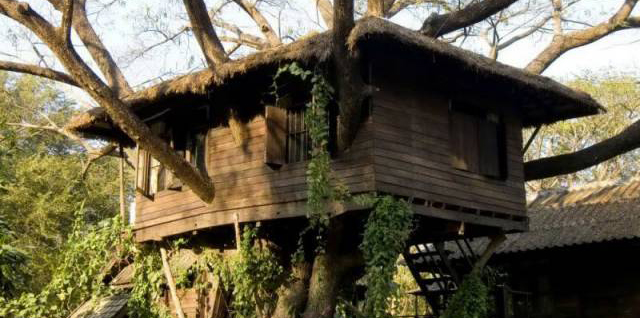
“Not letting your kid climb a tree because he might fall robs him of a classic childhood experience. But being emotionally overprotective takes away something else. “We have raised a generation of young people who have not been given the opportunity to…experience failure and realize they can survive it,” Gray has said. When Lenore’s son came in eighth out of nine teams in a summer camp bowling league, he got an eighth-place trophy. The moral was clear: We don’t think you can cope with the negative emotions of finishing second-to-last. Of course, it’s natural to want to see kids happy. But the real secret to happiness isn’t more high fives; it’s developing emotional resilience. In our mania for physical safety, coupled with our recent tendency to talk about “emotional safety,” we have systematically deprived our children of the thousands of challenging—and sometimes upsetting—experiences that they need in order to learn that resiliency. And in our quest to protect them, we have stolen from children the best resilience training known to man: free play.” -The Fragile Generation
Cook a Meal
I first made a ketchup sandwich when I was four or five years old (Mary taught me.). Toast came later at maybe seven, and by nine years old I made my first hamburger.
All kids need to be introduced to the joys of making their own food. Cooking might not seem that dangerous, but once your kids start wanting to help make dinner, you begin noticing how many tasks involve sharp and potentially dangerous hazards. Yet, this is the perfect venue to expose your children to those hazards… right next to you at your side.
Do not fall prey to the temptation of coddling your children. It’s worth not only letting your children assist you in the kitchen, but allowing them to try cooking on their own too. More so than any other activity on this list, it will teach them a valuable skill towards grown-up self-sufficiency.

One of the best things that my mother did was give all of us siblings an illustrated cookbook. I must have spent six months on a quest to make the perfect handmade pizza. While my sisters were busy making pies, cakes and cookies, my brother and I were deep into lasagna, homemade cream-of-asparagus soup, and different types of breads. Indeed, I was from this simple gift that I obtained my love (and appreciation) of real salted butter, extra-sharp cheddar cheese, and extra virgin olive oil.
Mothers listen up! Boys love to eat, and if you let them, they would LOVE to spend time in the kitchen with you. Who knows maybe you have a budding young chef?

Some suggested starter activities;
- All kids love hot (out of the stove) cookies.
- A basic hamburger.
- Mac & Cheese. Kids love this! (Teach them how to cook hamburger and mix it in for a basic kid goulash.)
- Spaghetti
- Hot dogs, especially over a camp fire.
- Dumplings – A Chinese family favorite.
- Grilled cheese sandwich.
- A basic salad.
Use a Bow and Arrow
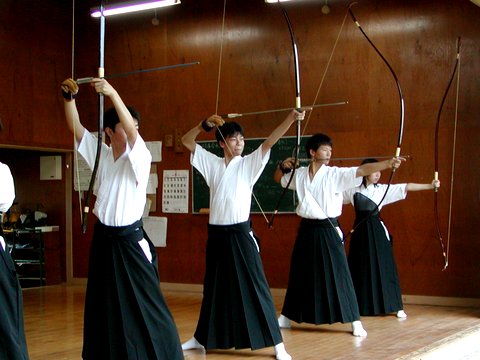
You know, kids all over the world are interested in bows and arrows. You know; archery. Instead of getting them a “safe” nerf version, give them the real thing. Expose them to real archery. If you have the means, teach them and if you cannot, hire an expert to show them the ropes.
If I were still in the states, my kids would be using compound bows and tromping in the woods every season. Ah, but that is not my reality at this time. I have to improvise.
Here in China, there are many opportunities to learn how to use a bow and arrow. Though they are actually mostly either the conventional design or a “traditional” Chinese long-bow design. However, there Japanese archery, also known as Kyūdō is available. Kyūdō is the Japanese martial art of archery. Experts in kyūdō are referred to as kyūdōka (弓道家).
There is a stress on form and function. As in Golf, the way to use your tools greatly affects your ability to hit your target. By attending these archery classes, the student can perfect and concentrate in the discipline of archery. That is a wondrous thing.
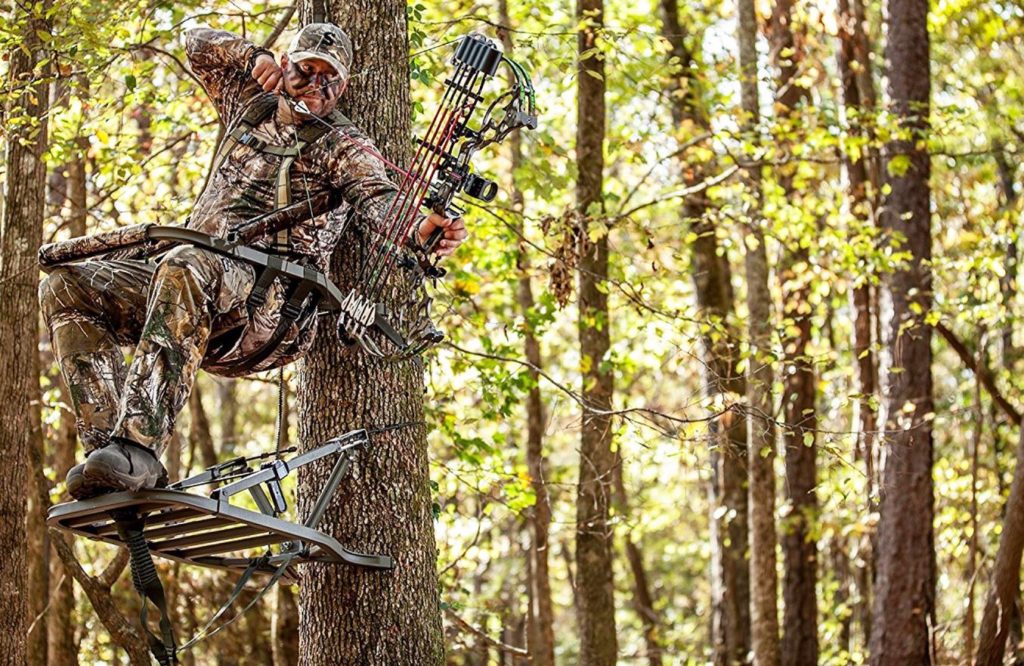
Later on, when we go to the states we will pick out a nice compound bow, maybe a “Bear Archery Cruzer”, or a “Diamond Archery’s Infinite Edge”. Something that will not break the bank, but will be able to provide an adjustable draw for first-timers. Trust me, a 70 pound draw is too much for children who are not used to it.
Then it’s up into the tree stand. God, I get goose-bumps just thinking about it.
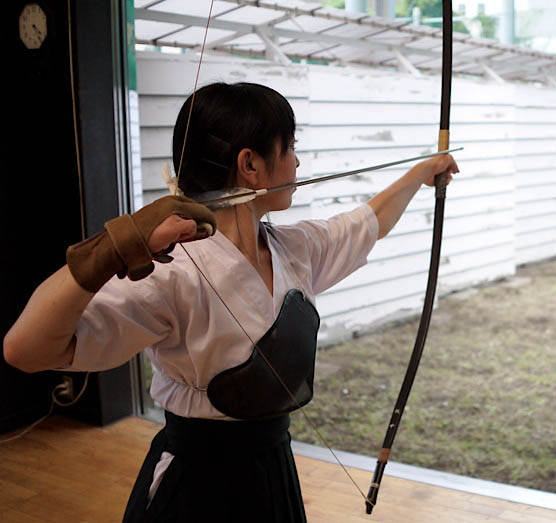
Hammer a Nail
Why? It seems to plain and so mundane.
Yet, hammering a nail is a basic life skill that every person should master. The problem is that many parents do not let their kids attempt this task. They are too fearful of them smashing their fingers. Yes, little children are uncoordinated, but the only way they’ll ever become coordinated is if they gain hands-on experience in using tools.
The wuss-generation of super protection of children has created a nation of morons.
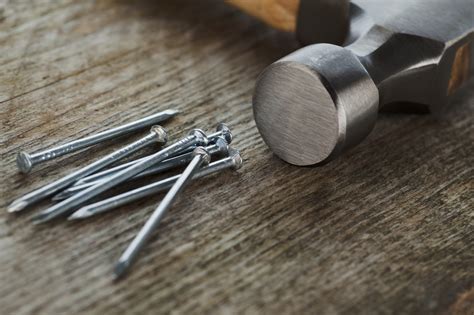
Indeed, many cannot use tape measures or even hammer a nail. Home Depot is in full-on panic mode after realizing that an entire generation of Americans have absolutely no clue how to use their products. As the Wall Street Journal points out, the company has been forced to spend millions to create video tutorials and host in-store classes on how to do everything from using a tape measure to mopping a floor and hammering a nail. Seriously, that is pure evidence of a society in decline. Don’t allow your children join these ranks. Get them started with tools.
Don’t buy one of those plastic toy construction sets. Just obtain a tiny (child sized) hammer. Start letting your 3-year-old practice hammering nails with a ball peen hammer. They’re lighter than the traditional claw variety and thus easier to handle. As your child’s dexterity and strength improve, upgrade him to a full-sized claw hammer, lay out a 2×4 and a box of nails, and let him go to town. Talk about cheap entertainment.
Build a Sand Castle
When I was a young boy, we used to have regular trips out to the beach. At that time, we were living in Bridgeport, CT and a trip to the beach was only a mere ten minute drive in the family sedan. There, we could play, swim and collect seashells. I remember once, when walking along the beach, I saw a father and his daughter build this most remarkable sand castle. It was not only “perfect”, but had little miniature statues all over the it. The father took wet sand and dripped them down forming these little artistic shapes. It was magnificent.
They left, and I stood by and admired the handiwork. Then, I ran back to my sister and her “best friend” who were playing nearby. I told them about the great sand castle, and they came with me to look at it. There, all three of us seven to eight year olds, stood around the castle. It was so amazing and beautiful. Then, as if on cue, both my sister and her friend kicked in and stomped the castle into oblivion.
Meanwhile, I just stood there in shock. How and why would they do such a thing? It was something that I had to grapple with through most of my youth. I just could not understand the behaviors of my fellow classmates. Sigh.

Take your children to the beach. Let them have fun, explore and exercise. Let them create, play and build. Remember, “play” is the “work” of children. It is how they learn. If you want your child to learn, then do it in the framework of play.
Play With Fireworks
“Calls to eight newspapers in North Carolina found none that would take anyone under the age of 18 to deliver papers. A police chief in New Albany, Ohio, went on record saying kids shouldn’t be outside on their own till age 16, “the threshold where you see children getting a little bit more freedom.” A study in Britain found that while just under half of all 16- to 17-year-olds had jobs as recently as 1992, today that number is 20 percent. The responsibility expected of kids not so long ago has become almost inconceivable. Published in 1979, the book Your 6-Year-old: Loving and Defiant includes a simple checklist for what a child entering first grade should be able to do: Can he draw and color and stay within the lines of the design being colored? Can he ride a small two-wheeled bicycle without helper wheels? Can he travel alone in the neighborhood (four to eight blocks) to a store, school, playground, or friend’s home? Hang on. Walk to the store at 6—alone? It’s tempting to blame “helicopter parents” for today’s less resilient kids. But when all the first-graders are walking themselves to school, it’s easy to add yours to the mix. When your child is the only one, it’s harder. And that’s where we are today. Norms have dramatically changed. The kind of freedom that seemed unremarkable a generation ago has become taboo, and in some cases even illegal.” -The Fragile Generation
Everyone plays with fireworks in China. It’s part of the culture, and Chinese New Year is a 24-7 non-stop explosion of fire and smoke. Yet, from what I hear, it’s use is limited in the United States. What? Is the United States run by a cadre of pussies or what?
Playing with fireworks teaches your kids how to responsibly handle fire and to have a healthy respect for exploding objects. Unfortunately, thanks to stringent fireworks laws and parents freaked out from viral stories of children losing eyeballs while lighting Roman candles, many kids today have never experienced the pure excitement and joy of igniting a fuse and waiting for the impending explosion.
Introduce your 3-5 year olds to the world of fireworks with “pop-pops” — those little paper-wrapped tadpole-like things you throw on the ground. They’re safe and the kids can have fun with them without injuring themselves or anybody else. You can also get them acquainted with sparklers. These preparatory “fireworks” offer a chance for children to learn general principles of safety: not to throw lit objects at others, touch people with a hot sparkler, handle a dud, etc.
When your kids hit age 6, you can start letting them light innocuous fireworks like snakes and smoke bombs. These don’t explode and will teach your kids how to light a fuse safely and to be aware of others as they use firecrackers.
By age 9 or 10, your kid should be ready to fire off pretty much anything you can find at a fireworks stand. You should continue to supervise their pyrotechnics until they’re teens, though.
The only caution that I would advise is not to make the fireworks yourself. It is DANGEROUS. I once worked with someone who's son was missing a hand precisely because the home-made firecracker in his hand went off. Be careful.
Conclusions
It is important that parents ACT like parent and not prison guards, or hyper-protective insecure single mothers. After all, it was that behavior that created Adolph Hitler…
Today, I have real concerns that the nation of millennials in the Untied States are exactly that. Improperly educated, with a serious retardation in basic and fundamental life skills. What ever, and when ever possible I am doing my best to prevent that from happening.
The job of a parent is to expose the child to dangerous situations in graduated steps. In such a way they learn the effects of consequences, and other important life lessons. Here are just some of my thoughts on this matter. If your child wants to gather a committee to figure out what to do, then they will never make it in the real world. They are already programmed to be a serf, a worker for others who own and run the factories and companies that your child will be programmed to live within.
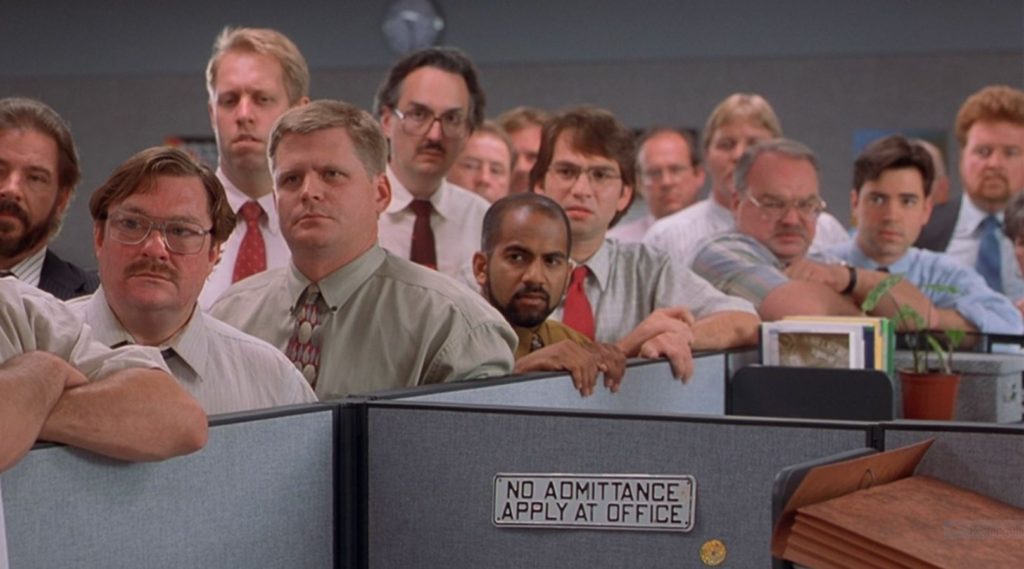
Let’s hope that it’s not too late.
Take Aways
- Parent has an important role in teaching their children.
- This role cannot be off-loaded to surrogates, whether a school, a television show, or a coach.
- The role requires participation with the child.
- The role requires a staged implementation of experiences in a controlled environment that permits learning of dangers and problem solving and avoidance.
- These are just some of my ideas implemented in my own family.
FAQ
Q: Isn’t your ideas going to put the children into danger?
A: I do not advocate putting anyone in danger. What I suggest is that the job of a parent is to introduce the child to potentially dangerous situations in a graduated way. When I was in training to be a Naval Aviator, they taught us how to perform a dead man’s float, swim in different techniques, and how to handle ourselves. Once we mastered those basics, we were then introduced to more complex events like how to untangle ourselves from a parachute that is dragging you through the water, and how to egress from a sunken helicopter at night. You must learn in stages.
Q: Why not let the school take on this responsibility?
A: After seeing what the public schools are teaching today, I am loathe to subject my child to anything resembling an American public school. It is your responsibility as a parent to teach your children. Your child’s success in life will be heavily influenced by how to prepare them for it.
Q: Isn’t your children going to public schools?
A: Well, yes, they are. However, I am here in China. They go to Chinese public schools and learn English and American history and civics at home. We have a very aggressive teaching schedule for them, and my Chinese wife is relentless in making sure that they are learning to the best of their ability. It is what is appropriate for us today. Needless to say, if we were in the United States, we would do something quite different.
Q: Do you have other ideas on how to raise children?
A: Oh my yes. However, Google SEO requirements, as well as my own limitations has necessitated the creation of this post as shown.
Q: Why do you talk so much about China? Why are you so down on America?
A: I am in China out of necessity. That being said, I happen to love the United States. In fact, I love what it was and what it was intended to be.
Today, I am pretty discouraged with how the government is, and how the educational system is. I am pretty jaded.
Today there is a battle between those who want America to RETURN to what it was intended to be, and those who want to continue the remake; to turn it into a globalist ruled oligarchy, with Americans acting as dumbed down serf-cattle. Until it is sorted out, I will stay right where I am, thank you.

This is Part 1 of a Two Part Post
This is part one of a two part post. You can go to the other post HERE. This post is rather long. I have exceeded the “industry norm” (Google SEO advisement) by a significant word count. As is my prerogative. You can visit the beginning of this post HERE.
Posts Regarding Life and Contentment
Here are some other similar posts on this venue. If you enjoyed this post, you might like these posts as well. These posts tend to discuss growing up in America. Often, I like to compare my life in America with the society within communist China. As there are some really stark differences between the two.



























More Posts about Life
I have broken apart some other posts. They can best be classified about ones actions as they contribute to happiness and life. They are a little different, in subtle ways.




























Stories that Inspired Me
Here are reprints in full text of stories that inspired me, but that are nearly impossible to find in China. I place them here as sort of a personal library that I can use for inspiration. The reader is welcome to come and enjoy a read or two as well.









Articles & Links
- You can start reading the articles by going HERE.
- You can visit the Index Page HERE to explore by article subject.
- You can also ask the author some questions. You can go HERE to find out how to go about this.
- You can find out more about the author HERE.
- If you have concerns or complaints, you can go HERE.
- If you want to make a donation, you can go HERE.
Notes
- Composed 23AUG18.
- SEO review 23AUG18.
- Published 24AUG18.

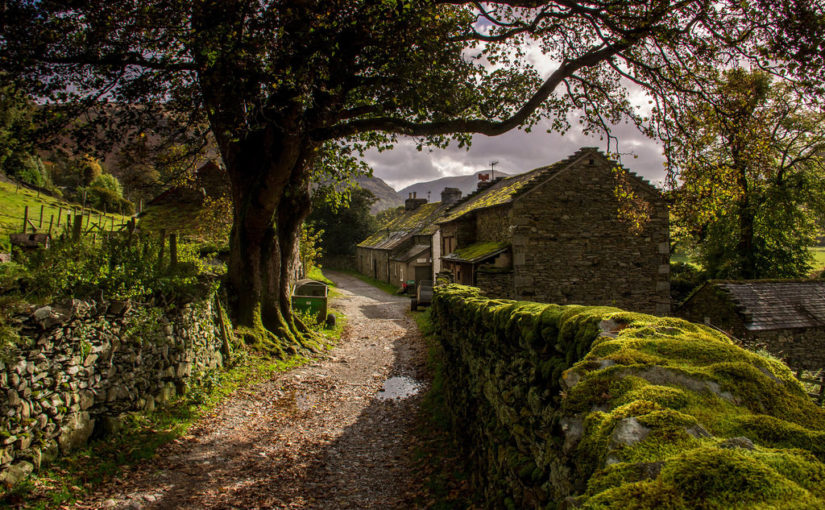

Suplex?
Brock Lesnar’s Suplex City Compilation
https://youtu.be/iGRTOZ8DTX4
And I always thought these guys were fake.